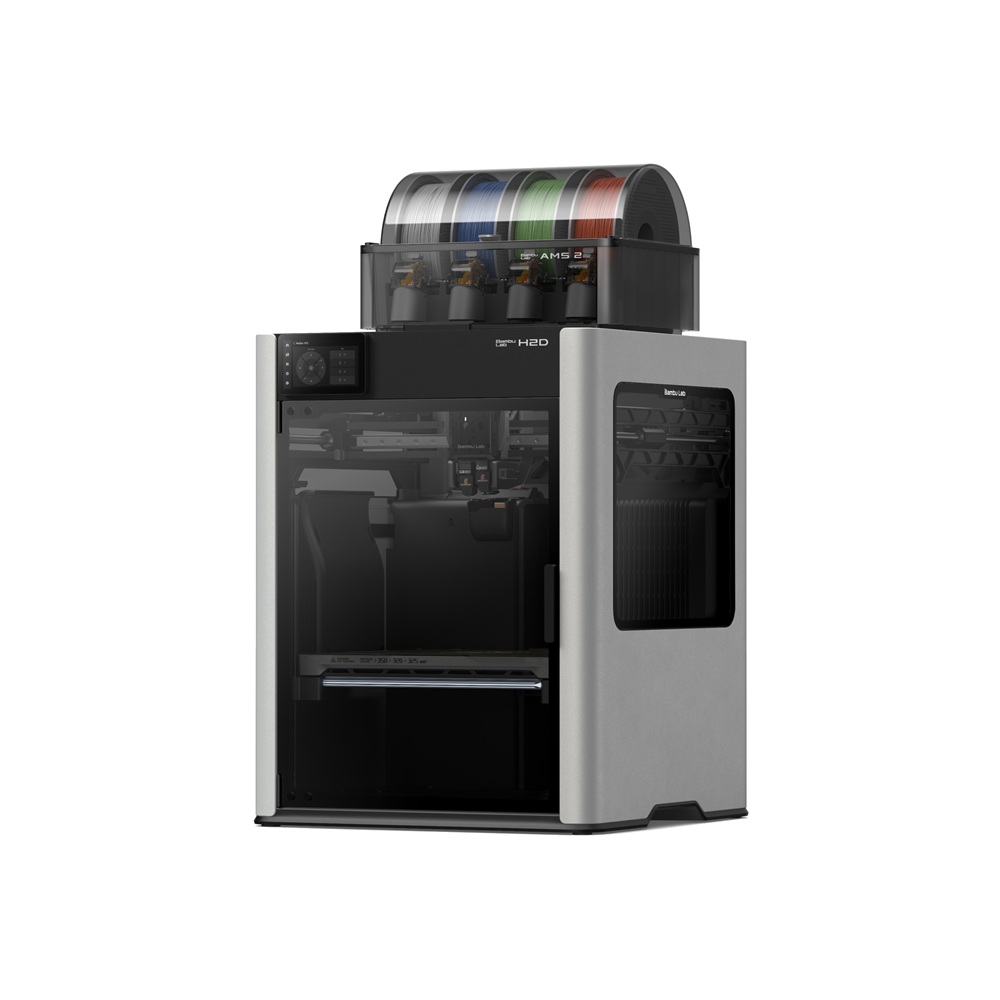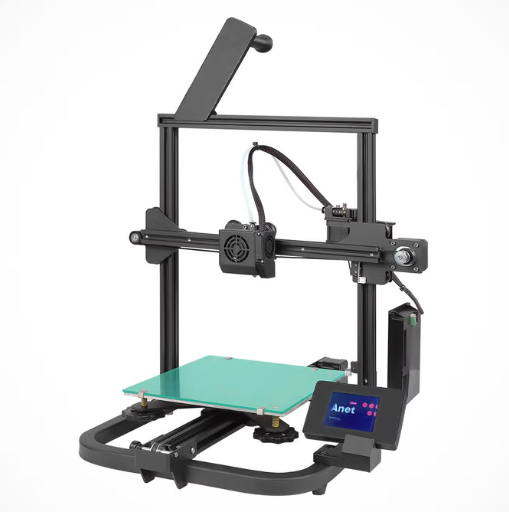Compare H2D vs A8 V2
Comparison between the best 3D printers
Choose the best 3D printer at the best price. The cheapest 3D printers are here.
Buy a 3D printer here with 3D Fila.
 |
 |
|
| Model | H2D |
A8 V2 |
| Printing Material | Filament | Filament |
| Buy Filament for Bambu Lab H2D | Buy Filament forAnet A8 V2 | |
| Estimated price | $1899,00 | $129,00 |
| Manufacturer | Bambu Lab | Anet |
| Release Year | 2025 | 2021 |
| Print Volume [mm] | 350x320x325 | 220x220x250 |
| Printer Size [mm] | 492x514x626 | 428x441x486 |
| Weight [kg] | 42,3 | 6,2 |
| Power Loss Recovery | YES | NO |
| Enclosed printer | YES | NO |
| Bed Leveling | Automatic | Manual |
| Filament End Sensor | YES | NO |
| Bed type | Heated | |
| Power supply system | Direct Drive | Bowden |
| Standard nozzle | 0,4 | 0,4 |
| Maximum Nozzle Temperature [°C] | 350 | 230 |
| Maximum Bed Temperature [°C] | 120 | |
| Maximum printing speed [mm/s] | 600 | 150 |
| Filament holder | YES | YES |
| Camera for supervision | YES | YES |
| Recommended filaments | PLA, PETG, ABS, ASA, TPU, PVA, Nylon (PA) | PLA |
| Recommended slicers | Bambu Studio | Cura, Simplify, Slic3r, IdeaMaker |
| Maximum Resolution [mm] | 0,01 | 0,1 |
| Processor | ||
| Display | Touchscreen 5'' | Display touchscreen 2,8'' |
| Power Supply | 110/220V / 250W | |
| Connectivity | Wifi, Bambu bus, Cartão SD | SD / USB |
| Operating systems | Windows, Mac, Linux | Windows, Mac, Linux |
| Date of registration in the system | 2025-03-31 | 2022-11-10 |
| Release date | 2025 | 2021 |
| Extra features | Bambu Labs H2D combines high-speed 3D printing with a chamber heated up to 65 °C, dual extrusion with automatic nozzle switching, an AMS for filament drying and exchange, and AI sensors that detect failures. It offers optional laser and digital cutting capabilities, features intelligent calibration through computer vision, vibration control, enhanced fire safety, and real-time camera monitoring. | The Anet A8 V2 is a Cartesian-XZ type 3D printer with a build volume of 220 x 220 x 250 mm, Ender 3 design and V-slot assembly. It has a 32-bit motherboard and touchscreen interface, promising ease of use. It uses open source firmware and has thermal failure protection. It stands out for its cable organization and the absence of a heated bed, focusing on energy savings and PLA printing. It comes with an external power adapter, aiming at greater safety, especially for beginners and educational use. |
| Support for multiple colors and materials (AMS and CFS) | YES | NO |
Notes * |
||
| Cost-benefit | 7 / 10 | 6 / 10 |
| Hardware | 8 / 10 | 0.6 / 10 |
| Tela | . | . |
| Print volume | 4 / 10 | 3 / 10 |
| Performance | 5 / 10 | 1 / 10 |
Conclusion |
| In comparing the Bambu Lab H2D and the Anet A8 V2, it’s clear that both printers cater to different types of users and needs. The H2D, with its higher price point, offers advanced features such as automatic bed leveling, a larger print volume, and superior print speed. Its enclosed design enhances safety and print quality, making it suitable for professional environments and demanding projects. It also supports a wider range of materials and includes multiple cutting-edge technologies like AI sensors and real-time camera monitoring, which significantly enhances user experience and reliability. On the other hand, the Anet A8 V2 serves as a budget-friendly option, ideal for hobbyists or beginners. While it lacks several advanced features found in the H2D, it still provides a good introduction to 3D printing due to its open-source nature and simplicity. The limited print volume and the necessity for manual leveling may deter more serious users, but its lower cost and ease of use make it appealing for educational purposes or smaller-scale projects. In conclusion, the choice between the two hinges largely on budget and intended use. For those who prioritize high speed, advanced functionality, and versatility, the H2D is a worthy investment. Conversely, for beginners or users with simpler needs, the Anet A8 V2 provides great value without overwhelming complexity. |

